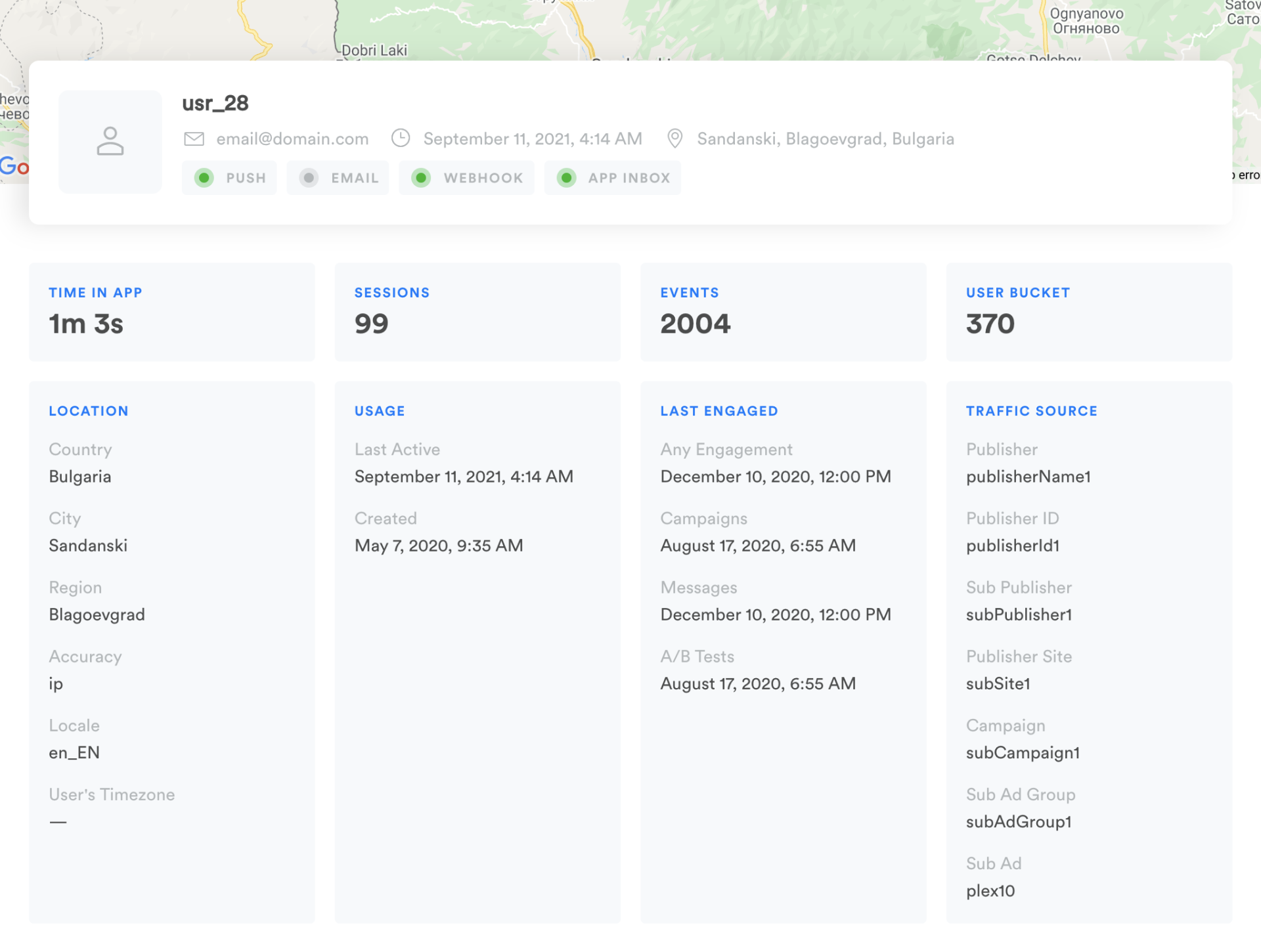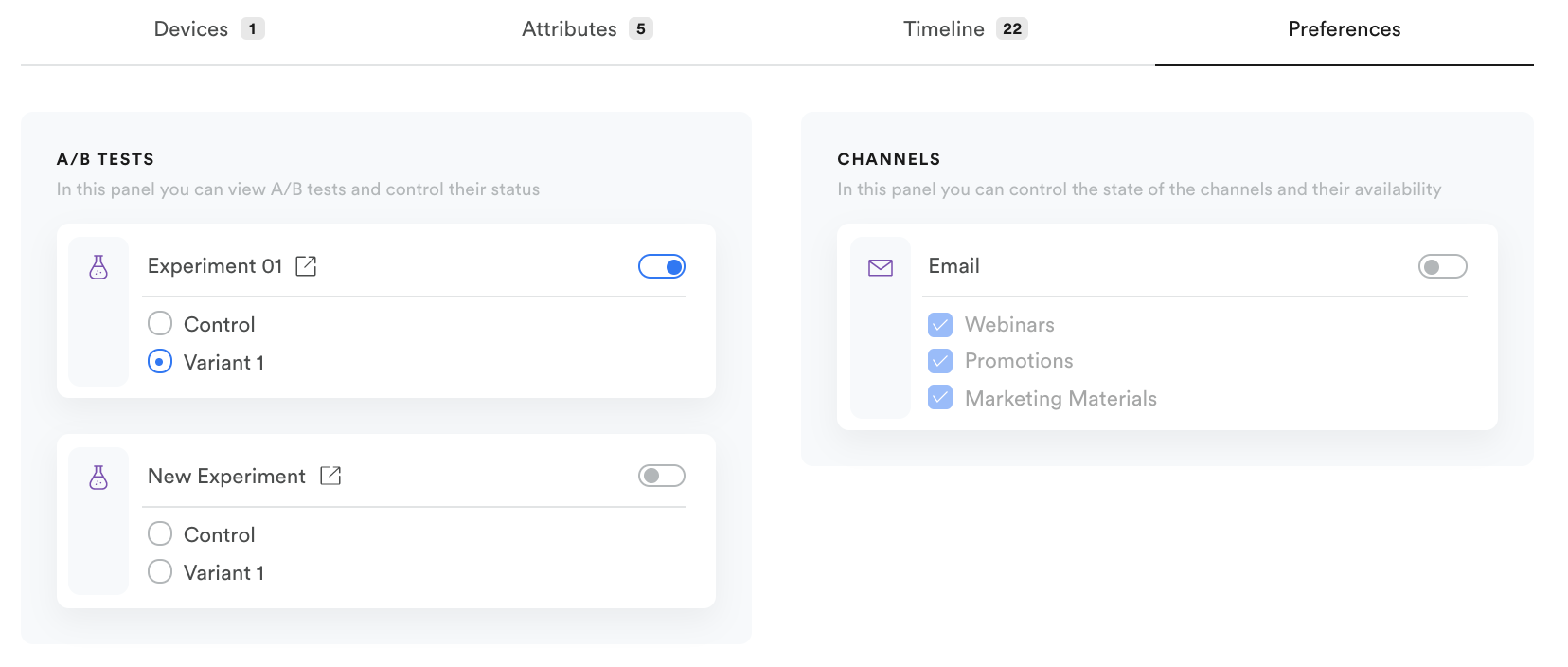User Profile

The core user profile shows you some general info about this user and how they interact with your app.
In the core profile, you can find the following:
- Map. The Google map shows the city center of the city where the user was when they started their latest session (not the specific location within the city).
- Avatar. The avatar provides extra context about the user. If the particular user is a developer, this is shown as a label on their avatar.
- Subscription status. Subscription status per channel (Push, Email, In-app, Webhook) is displayed under the avatar. Hover over a status to understand why it is on or off.
- User ID. The ID of the user in Leanplum, which can be copied to the clipboard.
- Email. The email address associated with the user profile.
- Time in app. The total amount of time the user has spent in the app.
- Sessions. The total number of sessions a user has had in the app.
- Events. The total number of events a user has triggered.
- User bucket. A randomly-assigned number between 0 and 999.
- Location. The user's city, region, and country. See Geofencing and location-based messaging for more on how we track location by default.
- Usage. An overview on when the user profile was created and when the user was last active.
- Last Engaged. An overview of when the user was engaged.
- Traffic Source. If you are sending Leanplum traffic source information via a third-party attribution provider (see setAttributionSourceInfo), this info will show up here.
Click on one of the four tabs to see more info about the user - Devices, Attributes, Timeline, Preferences.
Devices
This tab shows you the type of device from which the user signed into your app (a phone, tablet, computer, etc.). If the user has signed in on multiple devices, they'll all be listed here.
The Devices tab also gives you :
- The ability to register and unregister test devices.
- Links to all users using a single device.
- The user's push token history (if available) for each device. When a push token has been moved to a different users, Leanplum links to that user.
- Devices ordered by date use description. The "last used" device is explicitly marked.
- Each device's operating system (iOS, Android, etc.).
- A "Copy device ID" button.
Attributes
The Attributes tab shows you all the attribute names and values associated with this user. You can search through user attributes by key or value.
Timeline
The Timeline displays a chronological list of custom events and message events for a user. Each event card shows the name of the event, timestamp and total occurrences. First and Last occurrence of each event are labeled accordingly.
You can filter the Timeline by event type (Custom Events, Campaigns, Messages, A/B Tests, Deleted Events) or use the calendar control to show the Timeline for a custom timeframe.
Advanced View
Toggle the Advanced Timeline View on to see each specific occurrence of your Recency & Frequency enabled events for the last 90 days. You can click on an event name to expand it and see the event parameters for the occurrence.
Enable events for Recency & FrequencyMake sure your important events are enabled for Recency & Frequency. To find out how to enable new events, see Event Management.
Preferences

A/B Tests
This panel displays all A/B tests the user has participated in, including the variant they entered into. If the user is currently engaged in an active test, you can force them into a specific variant from this tab.
Channels
In this panel you can control the state of the channels and their availability. You will be able to unsubscribe or subscribe users either for individual email categories or from the entire email channel, regardless of the email category.
Updated 4 months ago
